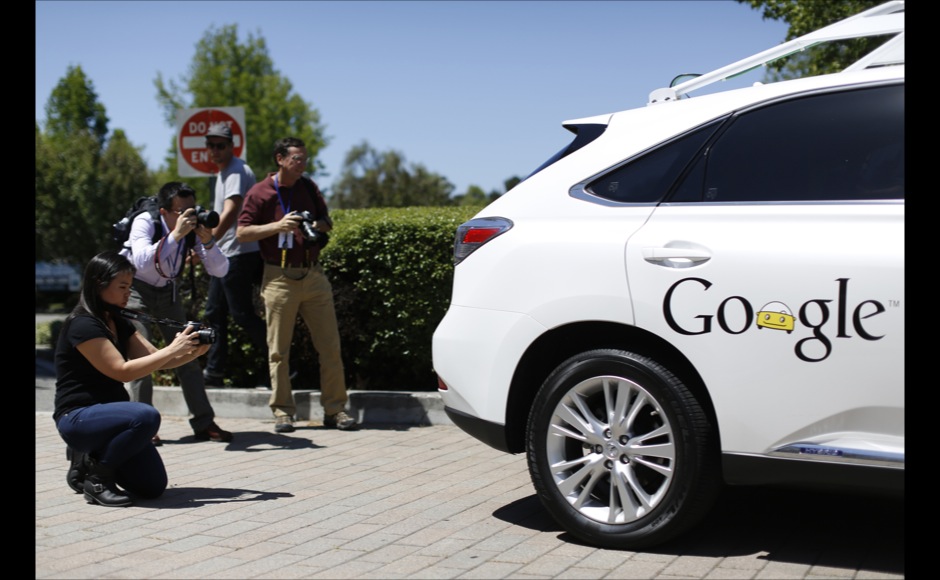Photos: Google's robot cars are getting ready to take over
Google’s self-driving car technology likely will not be available for several more years. But the Internet company is already beginning the job of making the public comfortable with the futuristic vehicles. Here are pictures of Google’s driverless cars.
)
Members of the media take photos of a Google self-driving vehicle at the Computer History Museum after a presentation in Mountain View, California. Google ferried more than two dozen reporters around Mountain View, California in the cars in a 30-minute ride-along that showcased their ability to automatically and safely navigate around city streets packed with cyclists, pedestrians and traffic signs. Reuters
A Google self-driving vehicle drives around the parking lot at the Computer History Museum after a presentation in Mountain View, California. While Google says the cars are getting better at navigation, they are unlikely to hit the roads before 2017. Reuters
A Google self-driving vehicle is parked at the Computer History Museum after a presentation. According to Project director Chris Urmson Google is optimistic that they're heading toward an achievable goal — a vehicle that operates fully without human intervention. Reuters
Chris Urmson, director of Google's Self-Driving Car Project, stands in front of a self-driving car. Reuters
Attendees peer into a Google self-driving vehicle at the Computer History Museum in Mountain View, California. Google says that human drivers would be expected to take control if the computer fails. The promise is that, eventually, there would be no need for a driver. Reuters
A sensor is seen spinning atop a Google self-driving vehicle before a presentation at the Computer History Museum in Mountain View, California. Google’s retrofitted Lexus RX450H SUVs have a small tower on the roof that uses lasers to map the surrounding area. Reuters
A screen displays views from various onboard sensors in a Google self-driving vehicle at the Computer History Museum. Reuters